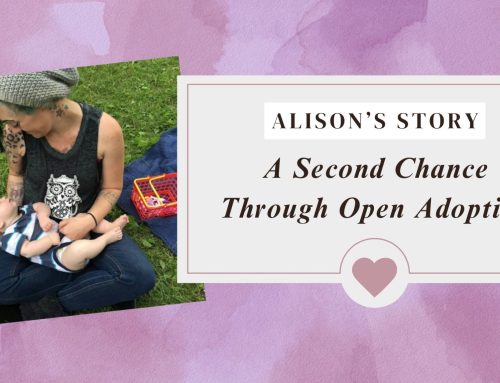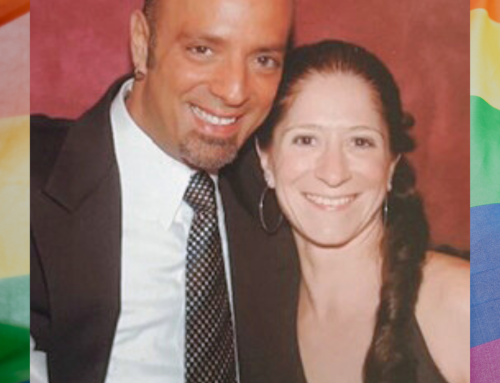The rules and regulations surrounding adoption options have changed significantly over the last 10 years. In addition to the declining trend in international adoption, there has been a steady shift toward more open information sources like social media, genetic testing, and access to original birth certificates.
Combined with regulatory changes, this has radically altered the landscape in a positive way.
There Is More Access To Information Today
For many years, the adoption process was a one-way process. Birth parents would place a child for adoption to a parent, and the birth parents rarely (if ever) saw the child again. Today, the legal landscape has changed dramatically.
In 18 states, a child placed for adoption will grow up with access to his or her birth certificate, sometimes referred to as an “original birth certificate.” This, combined with genetic testing, allows the individual to uncover information about his or her birth parents.

In addition to advanced genetic testing and birth records, individuals now have access to social media, almost always for free, which can connect that individual with his or her birth mother or father, possibly both.
There Is More Openness About Adoption
Today, only a minority of adoptions are “closed,” meaning that the birth parents don’t have contact with the child’s parents or the child. The remainder are considered more open, with 40 percent being mediated and 55 percent being partially or fully open.
Mediated adoptions means that there is an agreement between the birth parents and the parents for some type of contact after the adoption process is completed. The remainder of cases are even more open, with birth parents and parents having a long-term, functional relationship, forming a positive lifelong adoption triad.
Many agencies also offer open adoptions, and many birth parents, parents, and waiting children mainly report that these changes are nothing but positive.
There Is Greater Scrutiny Over Parents And Waiting Children
More oversight is being considered in light of a practice known as “re-homing.” Re-homing is the illegal act of an adoptive parent placing a child for adoption through unofficial channels. These parents have already adopted a waiting child through an agency, but often claim that they were not told everything about the child’s history and therefore want to place the child for adoption with another family.
However, this practice endangers the child because there is no oversight from the state during the process. Children are often confused, sometimes scared, and the adoption process is done in an unregulated manner.
Some agencies are improving pre and post-adoption education for families so that they understand their rights and responsibilities as well as the law concerning child custody.
There Are Significant Changes In International Adoption Rules and Regulations
International adoption rates are declining in the U.S. In 2004, there were 22,991 waiting children. In 2012, there were only 8,668 waiting children placed for adoption. While demand remains high for intercountry adoption, many countries are emphasizing family preservation and domestic adoption, preventing many waiting parents from adopting a waiting child.
There is a push for policy-makers to strengthen current laws and regulations to protect the interest of the child. Domestic adoption is not always the best route. Professionals have a moral obligation to ensure that all adoptions are in the best interest of the child, regardless of whether it is domestic or intercountry.
Birth Parent Rights Are Strengthening In Some States
States require the termination of parental rights. This is a legal process whereby the court hears testimony from the birth parents and makes a decree that they no longer have any legal rights to the child. This must occur before the waiting child can be placed. Termination of rights can be either voluntary or involuntary, and with or without the birth parent’s consent or agreement.
In some states, there is an appeal process which takes place if the birth parent’s rights were terminated without his or her consent. However, this is not uniform across all states.
Some states are changing their laws to allow for a more positive experience between the child, the birth parents, and the parents. Historically, once the birth parent’s rights were terminated, the child would no longer have a practical way to contact them, placing undue emotional stress on the birth parents and possibly the child as he or she grew into adulthood.
Several states have even created laws which allow for open adoption agreements to be legally enforceable so instead of only having the honor system to ensure the promises of openness are followed, there is some legal backing to protect birthparents as well.
Adoption Equality Standards Are Being Set
A hot-button issue in the U.S. is adoption equality. Although all states now permit same-sex marriage, the LGBT community still faces severe discrimination in regards to adoption options. Some states, for example, discourage LGBT persons from adopting a waiting child.
In fact, these states seek to pass laws making it illegal for the LGBT community to be parents.
But, equality advocates argue that the LGBT community should have the same rights to pursue family-building options as every other American.
Changes In Attitudes And Societal Trends
The issue of adoption has a torrid past. Today, advocates for adoption are trying to change the way people think about the process.
We believe that openness and positivity will help shape the future of waiting children, birth parents, and parents, creating more stable family structures and, ultimately, healthier children.
In the past, almost all waiting children were placed for adoption under “closed” circumstances. In other words, states were not required to record the number of private, domestic, adoptions. Yet, some organizations attempted to compile this data anyway.
According to the Adoption Institute, roughly 127,000 children were placed for adoption in the U.S. in 1992. Today, that number may be close to 7 million.

The secretive nature of the adoption process is fading away and, with it, the undeserved and unearned shame and stigma of having been adopted as a child.
When facing an unplanned pregnancy, choosing to make an adoption, although incredibly emotional, may be one of the best decisions you make. Today, you have many adoption options, access to more information about the waiting parents, and options for staying in touch with your child as they grow.





Leave A Comment